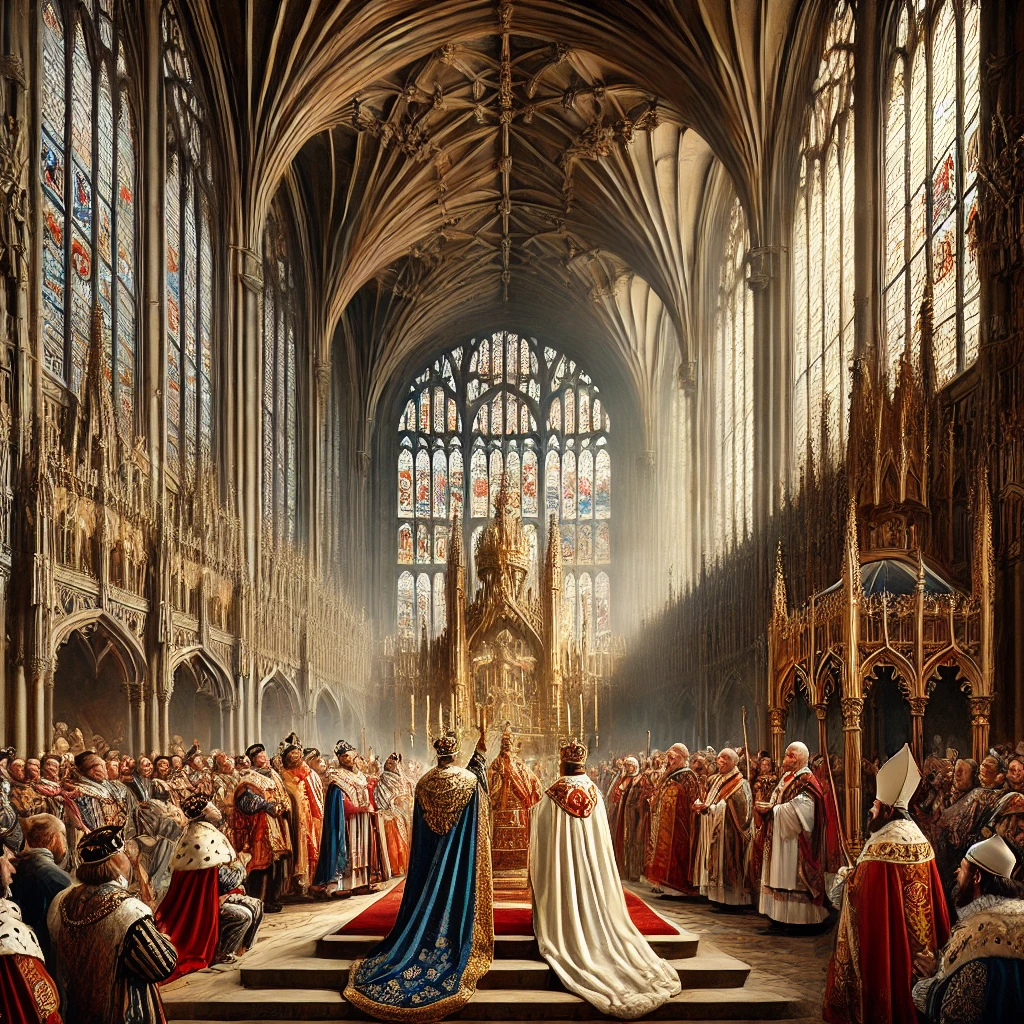On October 30, 1485, Henry Tudor, now known as Henry VII, was crowned king of England at Westminster Abbey, marking the beginning of the Tudor dynasty and a significant turning point in English history. His ascent to the throne followed a tumultuous period marked by civil strife and conflict, known as the Wars of the Roses. Henry’s victory at the Battle of Bosworth Field just weeks earlier had ended decades of power struggles between the houses of Lancaster and York, ultimately paving the way for stability and a new era in England.

The Rise of Henry Tudor
Henry Tudor was born in 1457, the son of Edmund Tudor and Margaret Beaufort, which connected him to the royal lineage of the Lancastrians. His early life was marked by instability, as he was forced into exile during the Wars of the Roses, a series of dynastic conflicts for the English throne. After years in France, Henry gathered support from disillusioned nobles and military leaders who opposed the Yorkist rule under King Richard III.
The decisive moment came at the Battle of Bosworth Field on August 22, 1485, where Henry’s forces clashed with those loyal to Richard III. The battle concluded with Richard’s death and Henry’s victory, which not only secured his claim to the throne but also represented the end of the Yorkist dynasty. This victory set the stage for Henry’s coronation and the establishment of the Tudor lineage, which would have a profound impact on English history.

The Coronation Ceremony
Henry VII’s coronation took place on October 30, 1485, in a ceremony filled with splendor and significance. The event at Westminster Abbey was attended by nobility, clergy, and commoners alike, signifying the unity of the nation under a new ruler. During the ceremony, Henry took an oath to uphold the laws of England and protect the rights of his subjects, reinforcing the idea of kingship as a partnership between the monarch and the people.
One of the notable aspects of Henry’s coronation was the inclusion of a symbolic gesture: he wore a crown adorned with the red rose of Lancaster and the white rose of York, a powerful visual representation of the unification of the two rival factions. This imagery was essential in promoting peace and reconciliation in a country weary from years of conflict.
The Beginning of the Tudor Dynasty
Henry VII’s coronation marked the beginning of the Tudor dynasty, which would rule England for over a century. His reign brought stability and a series of important reforms that transformed the nation. Henry focused on strengthening the monarchy, reducing the power of the nobility, and establishing a centralized government. He implemented financial reforms that improved the royal treasury, setting the foundation for a prosperous England.

The Tudor era also saw the establishment of the Church of England and significant developments in art, culture, and exploration. Henry VII’s marriage to Elizabeth of York further solidified the union of the two houses, creating a new sense of national identity. The legacy of the Tudor dynasty would continue with the reigns of his children, including the infamous Henry VIII and the ultimately beloved Elizabeth I.
The Legacy of Henry VII
Henry VII’s coronation on October 30, 1485, is remembered as a pivotal moment in English history. His ascension to the throne not only marked the end of the Wars of the Roses but also laid the groundwork for a more stable and unified England. The Tudor dynasty would go on to influence the course of English history through its political, social, and religious changes.
The legacy of Henry VII is reflected in the modern understanding of monarchy and governance in England. His emphasis on strong leadership, financial prudence, and national unity served as guiding principles for future rulers. Furthermore, the Tudor period became a defining era in English history, characterized by significant transformations that shaped the nation for generations to come.
Henry Tudor’s crowning on October 30, 1485, signified not just the rise of a new king but the dawn of a transformative era in English history. His leadership marked the transition from a time of division and turmoil to one of relative peace and progress. As we reflect on this momentous occasion, we recognize the profound impact of Henry VII and the Tudor dynasty on the development of England, celebrating a legacy that continues to resonate in the historical narrative of the nation. The unification of the houses of Lancaster and York under Henry’s reign symbolizes the enduring quest for stability and identity, themes that remain relevant in the modern world.
